 Text and photographs copyright 2015 Becky Lamb. Design and concept copyright 2015 Ulysses Press and its licensors. All rights reserved. Any unauthorized duplication in whole or in part or dissemination of this edition by any means (including but not limited to photocopying, electronic devices, digital versions, and the Internet) will be prosecuted to the fullest extent of the law. Published in the U.S. by Ulysses Press P.O.
Text and photographs copyright 2015 Becky Lamb. Design and concept copyright 2015 Ulysses Press and its licensors. All rights reserved. Any unauthorized duplication in whole or in part or dissemination of this edition by any means (including but not limited to photocopying, electronic devices, digital versions, and the Internet) will be prosecuted to the fullest extent of the law. Published in the U.S. by Ulysses Press P.O.
Box 3440 Berkeley, CA 94703 www.ulyssespress.com ISBN: 978-1-61243-497-1 Library of Congress Control Number: 2015937556 10 9 8 7 6 5 4 3 2 1 Acquisitions Editor: Casie Vogel Managing Editor: Claire Chun Editor: Susan Lang Proofreader: Renee Rutledge Front cover design: Michelle Thompson Interior design and layout: what!design @ whatweb.com Index: Sayre Van Young Distributed by Publishers Group West IMPORTANT NOTE TO READERS: This book is independently authored and published and no sponsorship or endorsement of this book by, and no affiliation with, any trademarked brands or other trademarked brands or products mentioned within is claimed or suggested. All trademarks that appear in this book belong to their respective owners and are used here for informational purposes only. The authors and publisher encourage readers to patronize the quality brands and products mentioned in this book. This book is dedicated to my family, who have lovingly and enthusiastically supported me. You are the best project and creation in my life.And to my mom, who inspired me throughout my life to be an independent and strong woman.CONTENTSI was blessed to be raised by a mother who had a do-it-yourself attitude. She decorated our home on a tight budget, often creating the decor she wanted for a few dollars.
When my sister and I spied a rainbow bedroom with L-shaped beds and a modular desk set in a catalog, our mom made it for us on limited funds. She painted, sewed, decoupaged, and used a screwdriver to create a beautiful home.Some of my fondest memories are from when I was allowed to create my own projects. I would decoupage alongside my mom, making art from old greeting cards and scraps of wood. I sewed pillows and doll clothes from fabric scraps, and I even built a fort from old grocery store crates that my dad brought home.Decorating on a budget stayed with me, not only out of necessity but also because I enjoy the challenge of creating a beautiful space for very little money. I like taking something that someone finds useless and turning it into a new, fresh piece. I love being creative and making items for my home that are unique and personal.My husband helped to further my passion for budget decorating.
He is a frugal man who enjoys working with his hands and building. In the beginning of my woodworking career I would ask him to do the cutting, sanding, and drilling for me. That didnt last long because our schedules didnt allow us to work on projects at the same time, and I was often like a toddler, wanting to do it myself. He patiently taught me the safe use of power tools and the correct way to assemble components so that an item was sturdy and well made.I am not sure when I first saw something made from a shipping pallet, but I do know I was instantly enthralled. I saw the possibilities of an endless supply of free wood. My mind worked overtime thinking of different ways to use pallets.
My first project was the simple and popular pallet shelf that I changed a bit by adding coat hooks. That was all it took: I was hooked on pallets and have been imagining the possibilities and creating with them ever since that first pallet shelf.I began stalking alleys and parts stores for pallets. I hauled them home in my little SUV. Pallets come in all sizes I currently have a couple of 12-foot-long pallets for a floor in a backyard shed my family and I are building from pallets. I experimented and found the best way to take pallets apart.I love finding pallets made from all kinds of wood. When I found my first pallet made from solid hickory, my heart skipped a beat because hickory is a hardwood used for fine furniture and cabinet making.
And I had found it for free! My family also looks out for pallets and brings them home for me. The joy of finding the perfect pallet still thrills me. My hope is that through reading this book you discover the same joy and love for pallets, that you find your creativity, and that you learn something new you can use always.This book shares 26 pallet projects that you can make, personalize, and use as a springboard to dream up your own pallet projects. It begins with all of the basics you need to know to get started building with pallets, plus a tutorial on my favorite and most popular painting technique. Once you build one or two of these projects, you will practically be an expert. In the building chapters you will find projects for a range of abilities, from beginner to expert levels, with step-by-step instructions and pictures.
The final building chapter shows you what to do with all of those bits and pieces, the scraps you cant bear to throw out. So grab a mug of your favorite beverage, sit back and read, and start planning which pallet projects you will create first! FINDING PALLETSOnce I decided I wanted to build with pallets, I needed to find some. One drive around my small town and I discovered plenty of sources of quality pallets: a flooring store, a heating and air conditioning business, a plumbing supply store, a glass shop, and the local newspaper. I always go into the business and ask if pallets are free for the taking. Most often the business is thrilled that someone wants to take pallets off their hands. Also, pallets are often listed in the free section of classified ads.
FINDING PALLETSOnce I decided I wanted to build with pallets, I needed to find some. One drive around my small town and I discovered plenty of sources of quality pallets: a flooring store, a heating and air conditioning business, a plumbing supply store, a glass shop, and the local newspaper. I always go into the business and ask if pallets are free for the taking. Most often the business is thrilled that someone wants to take pallets off their hands. Also, pallets are often listed in the free section of classified ads.
Once you find a couple of good sources, you will know where to look for the perfect pallet for a particular project. WHAT TO LOOK FOR WHEN PICKING PALLETSAfter you discover where to find free pallets, you need to know what to look for because not all pallets are created equal. Most important: Look for the IPPC (International Plant Protection Convention) label or the HT stamp on the pallet.The IPPC identifier means that the manufacturer has followed the regulated international standard for treating pallets. The HT identifier means that the pallet wood has been heat treated, rather than chemically treated. Do not use a pallet if you do not see the IPPC label or the HT stamp. Pallets that are only for domestic shipping may not have the IPPC label, but you can only be sure they are safe if they have the label. The stamp also shows the pallets country of origin.
WHAT TO LOOK FOR WHEN PICKING PALLETSAfter you discover where to find free pallets, you need to know what to look for because not all pallets are created equal. Most important: Look for the IPPC (International Plant Protection Convention) label or the HT stamp on the pallet.The IPPC identifier means that the manufacturer has followed the regulated international standard for treating pallets. The HT identifier means that the pallet wood has been heat treated, rather than chemically treated. Do not use a pallet if you do not see the IPPC label or the HT stamp. Pallets that are only for domestic shipping may not have the IPPC label, but you can only be sure they are safe if they have the label. The stamp also shows the pallets country of origin.
The country of origin is not important as long as the pallet has the IPPC label. Most of the pallets I use are from the U.S.; a few are from Canada. In addition, check the pallet for anything that looks like chemical or oil residue. Stay away from any suspect pallets it is not worth the risk of getting something unknown on your skin or in your lungs. Many pallets have black skid marks on them from transport. These pallets are safe to use, and most often the marks can be easily sanded off.
Next page


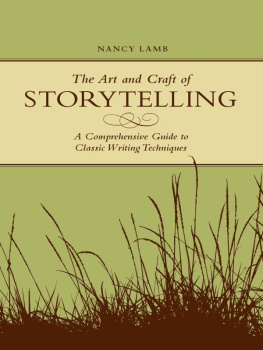
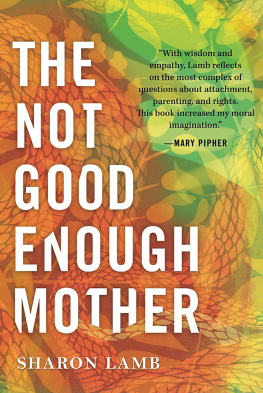
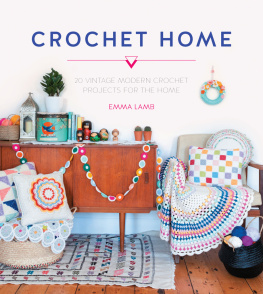
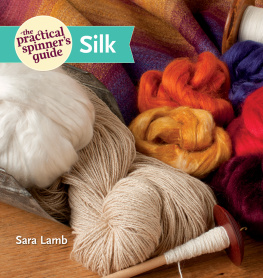

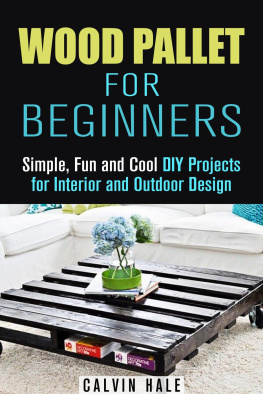
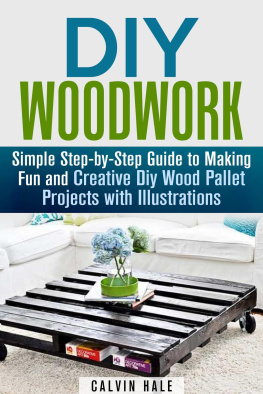


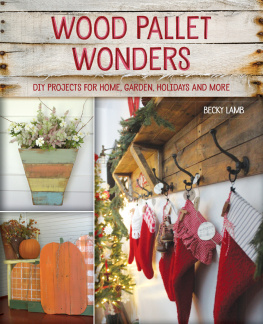
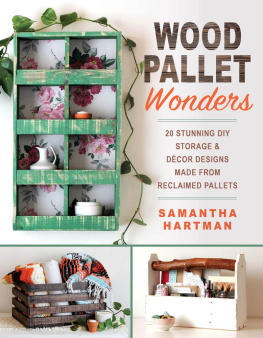
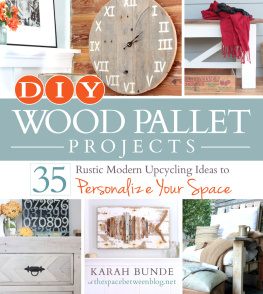
 Text and photographs copyright 2015 Becky Lamb. Design and concept copyright 2015 Ulysses Press and its licensors. All rights reserved. Any unauthorized duplication in whole or in part or dissemination of this edition by any means (including but not limited to photocopying, electronic devices, digital versions, and the Internet) will be prosecuted to the fullest extent of the law. Published in the U.S. by Ulysses Press P.O.
Text and photographs copyright 2015 Becky Lamb. Design and concept copyright 2015 Ulysses Press and its licensors. All rights reserved. Any unauthorized duplication in whole or in part or dissemination of this edition by any means (including but not limited to photocopying, electronic devices, digital versions, and the Internet) will be prosecuted to the fullest extent of the law. Published in the U.S. by Ulysses Press P.O.
